Search the Blog
Categories
- Books & Reading
- Broadband Buzz
- Census
- Education & Training
- Friday Reads
- General
- Grants
- Information Resources
- Library Management
- Nebraska Center for the Book
- Nebraska Libraries on the Web
- Nebraska Memories
- Now hiring @ your library
- Preservation
- Pretty Sweet Tech
- Programming
- Public Library Boards of Trustees
- Public Relations
- Talking Book & Braille Service (TBBS)
- Technology
- Uncategorized
- What's Up Doc / Govdocs
- Youth Services
Archives
Subscribe
Tag Archives: Friday Reads
Friday Reads: “Hag-Seed” by Margaret Atwood

Let me set the scene for you. Felix, is a disgraced theatrical director, down on his luck, he applies to teach a prison literacy program. He has faded into obscurity after suffering personal loss and professional betrayal. As a result, a motley group of prisoners takes on Felix’s challenge of performing “The Tempest” to earn themselves credit in the literacy program. A play Felix has become slightly obsessed with after the fall of his career. Not only do you get to experience the play re-told but also from behind the curtain, an angle only those on the stage usually have access to. Prepare yourself for an interesting and diverse cast of characters, dark plot twists, redemption, and in true Shakespeare fashion, revenge.
I’m always in favor of a good classic transformed, and Margaret Atwood does an exceptional job of bringing “The Tempest” into the 21st century with her novel “Hag-Seed: William Shakespeare’s The Tempest Retold” (Hogarth, 2016.) The novel is a part of Random House’s Hogarth Shakespeare series, where well-known authors re-tell one of Shakespeare’s plays. So for those of you who are fans of”West Side Story,” “Ten Things I Hate About You,” or “She’s the Man,” this is really a series you should check out.
Posted in Books & Reading, General
Tagged Book Review, Friday Reads, Hag-Seed, Margaret Atwood, Reading, Shakespeare, The Tempest
Leave a comment
Friday Reads: “Low Mountains or High Tea” by Steve Sieberson

A few years ago, I read and enjoyed Steve Sieberson’s book, The Naked Mountaineer: Misadventures of an Alpine Traveler (University of Nebraska Press). Sieberson renews his adventure writing with an equally delightful Low Mountains or High Tea: Misadventures in Britain’s National Parks. Sieberson explains how he and his wife – lovingly referred to throughout the book as the Italian Woman – found themselves spending a summer in Britain with intention for travel to Britain’s national parks. A rental car, road maps and guidebooks were among the tools for their adventure.
Sieberson grew up in northwest Iowa. A family trip one summer from his rural home in northwest Iowa to Colorado began his lifetime fascination with travel and with high elevations. From there he read books on mountaineering, books that he found at his local library. His boyhood fascination has endured through his adult years. His summer adventure in Britain included mountain experiences, visits to far-flung places, pubs, teahouses, B&Bs, and much, much more.
What I found admirable and especially enjoyable about Sieberson’s book is his wonderful humor. Here’s an example: in conversation with a local about nearby trails, he writes “I said that I wasn’t much interested in the three-peak circuit, but that I just wanted to get to the high point and back in the most direct way possible. The tilt of her head and the lift of an eyebrow suggested that perhaps my slam-bam approach to her magnificent hills did not meet her approval.” Throughout, he pokes fun at British ways and novelties. His characterizations of the many people encountered and interactions are especially memorable.
Sieberson’s book is keenly descriptive and rich in detail. His descriptions of hiking and climbing are nearly photographic in detail. I’d like to know how he captured those many impressions and recorded them with such precision. Sieberson’s commentary on the people, places, customs, and food are more than travel guide worthy.
Sieberson’s law career provided opportunities for travel throughout the world. In recent years, he has added professor to his resume as a Creighton University Law School faculty member.
Sieberson, Steve. Low Mountains or High Tea. University of Nebraska Press, 2019.
Posted in Books & Reading
Tagged #FridayReads, Friday Reads, travel writing, University of Nebraska Press
Leave a comment
Friday Reads: Live Young Forever
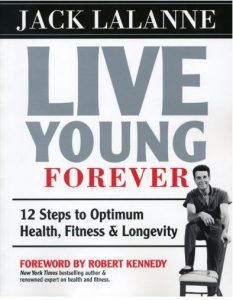
What I was really looking for was a biography about Jack LaLanne, but unfortunately, I was not able to find any. The next closest thing (although I later found out there was a documentary film made about Jack, called Anything is Possible, but only about 39 minutes in length) was Live Young Forever, which did just fine and it was written by Jack himself. How did I get to the point of seeking out this book? Well, for one I never learned of Jack’s world famous feats until years after they occurred, having mostly known him for his juicer infomercials that aired when I was a kid after the Saturday cartoons. Jack’s exercise show was before my time. I remember him as the old health nut in the jumpsuit hawking juicing machines. Then recently, I clicked PBS on and got intrigued by the documentary called Fat, Sick, and Nearly Dead. The documentary follows Australian entrepreneur, author, and filmmaker Joe Cross across the U.S., as he went on a 60-day journey of consuming only juices from fresh fruits and vegetables. While Jack advocated healthy doses of exercise, juice, fish, fruits, and vegetables, Joe’s condition (he weighed over 300 pounds and had a host of health conditions) necessitated a juice only “fast” to kick start his health. Then I realized I’d unfortunately (for me) sold my mom’s Jack LaLanne juicer at a garage sale for $10, so it was off to find another.
Back to Jack. For anyone looking to live a healthier lifestyle, this book has quite a few essential elements such as diet, exercise, and motivation. However, it was Jack’s personal stories that I liked the best. Aside from his health advocacy and TV show, this book also contains numerous stories of his famous feats. Such as a 21-year old Arnold Schwarzenegger, who in 1968 came to Venice beach in California and witnessed a 54-year old LaLanne doing chin-ups and push-ups. Arnold declared a challenge, and lost badly to LaLanne. Said Arnold: “That Jack LaLanne’s an animal! I was sore for four days. I couldn’t lift my arms.” Some of Jack’s other feats included:
- 1955 (age 41) swam from Alcatraz Island to Fisherman’s Wharf, while handcuffed;
- 1956 (age 42) set a claimed world record of 1,033 push-ups in 23 minutes;
- 1959 (age 45) did 1,000 jumping jacks and 1,000 chin-ups in 1 hour, 22 minutes;
- 1974 (age 60) swam the same Alcatraz to Fisherman’s Wharf route, handcuffed, shackled at the ankles, and towing a 1,000 lb boat;
- 1976 (age 62) swam one mile in Long Beach Harbor, handcuffed and shackled, towing 13 boats to represent the original 13 colonies, and containing 76 people; and
- 1984 (age 70) swam 1 mile in Long Beach Harbor, handcuffed and shackled, towing 70 rowboats containing various guests.
Finally, my favorite Jack LaLanne quote:
“15 minutes to warm up? Does a lion warm up when he’s hungry? ‘Uh oh, here comes an antelope. Better warm up.’ No! He just goes out there and eats that sucker.”
Friday Reads: ‘Komi Can’t Communicate’ by Tomohito Oda
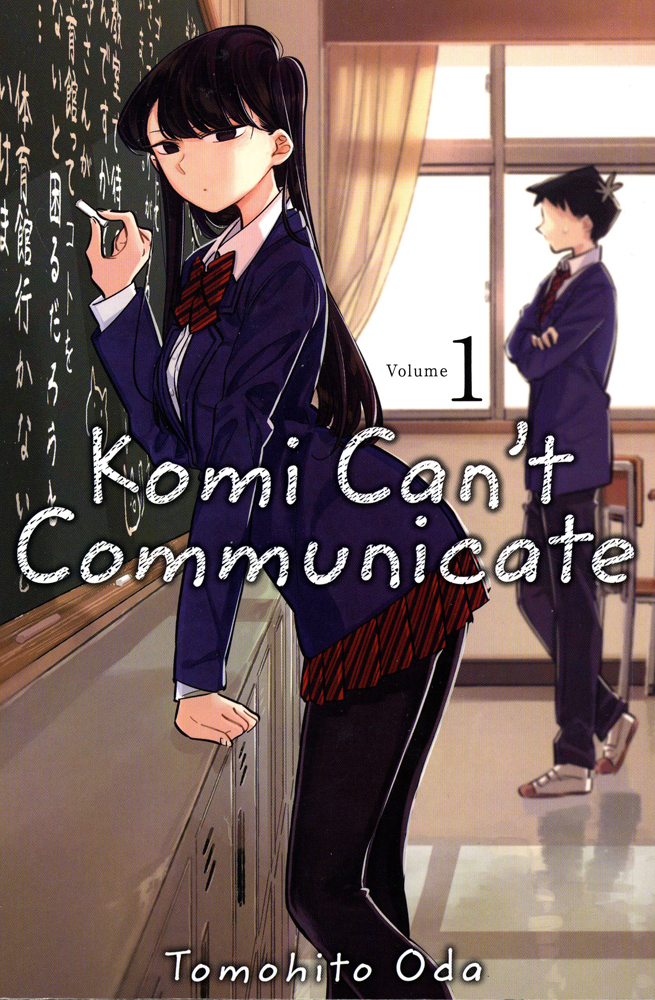
A black and white manga, set to read from back to front, as is done in Japan, this is the first book in a new series. Komi is the ultimate student at the high school and others are afraid to talk to her because she is aloof and extraordinary. Tadano is just happy he is now going to Itan Private High School, and he is planning to blend in and not be noticed. When asked to introduce herself, as all the students in class were asked to do on the first day, she walked to the front of the room, picked up the chalk, and wrote Shoko Komi on the board, walked back to her desk and sat down without saying a word.
At the end of the class, Tadano finds himself alone in the classroom with Komi after all the students and teacher have left. There he discovers Komi is not aloof, she freezes whenever she tries to speak to someone. She writes what she feels on the chalkboard, letting him know that she wants to make friends and hopes he will help her. Tadano finds he has promised to help her make 100 friends, starting with him. Tadano is in trouble now because he doesn’t have any friends yet, aside from Komi, and so has no one to introduce to her. Then he encounters Osana, an old friend from junior high, and she knows everyone in the school. Maybe they are on the way to making 99 more friends for Komi.
The artwork showing Komi with huge eyes or frozen and trembling does a great job of conveying her level of discomfort and social anxiety.
There are three volumes out now, and volume four will be published in December. The entry on Amazon says there will be six volumes in this series, and I definitely want to read the titles that are available now.
Oda, Tomohito. Komi Can’t Communicate, Volume 1. VIZ Media, 2019.
Friday Reads: ‘Mortal Engines’ by Philip Reeve
 We’re back to the age old question: which was better, the book or the movie?
We’re back to the age old question: which was better, the book or the movie?
In the case of Mortal Engines, I would have to say they were both good! But, they are also quite different from each other. Like many books that have been made into films, the movie version of Mortal Engines, by Philip Reeve, is not an entirely faithful adaptation of the book.
The general storyline is the same in both. In a post-apocalypic future, war has devastated most of the world. In order to survive, many cities have been put on wheels, driven by huge engines. Larger cities chase down smaller ones to capture them, tearing them apart to take their resources and citizens. London has become one of the largest Traction Cities, and some of its leadership are determined to destroy anyone who doesn’t believe that this is how the world should be run. Because there are still cities that work the old way, without wheels, staying in one place.
The book is a Young Adult novel, and it definitely has more of that feel to it than the movie. In the movie, the main characters are not teenagers, so it may appeal more to a different audience.
The endings of the book and the movie are also very different. I won’t give either of them away. But, I will say that they both ended on a hopeful note, looking forward to a potentially better future.
I enjoyed Mortal Engines, both as a book and as a movie. If you read and watch them, don’t expect the same experience. I’d recommend that you consider them two separate stories, based in the same universe. Don’t worry about the fact that the movie isn’t an exact copy of the book. They’re each good in their own way!
Friday Reads: My Sister the Serial Killer by Oyinkan Braithwaite
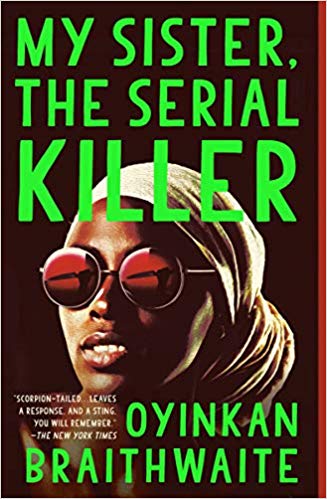
It’s a well known fact that sisters have complicated relationships, possibly none more so than Korede and her younger sister Ayoola. Nurse Korede is hardworking, practical, and reliable, while her beautiful little sister is anything but. Charming and sweet, but ultimately selfish and unmotivated, Ayoola surrounds herself with those that will take care of her: men, friends, and Korede.
While she resents Ayoola’s easy and fun-filled life, Korede nevertheless continues to bail her sister out of every mess she gets into… including murder. Ayoola has killed the last 3 men she dated, calling her big sister to help her hide the evidence. Now, Ayoola has attracted the attention of Korede’s boss (and crush), head doctor Tade. Korede must decide if blood really is thicker than water (or just harder to clean up).
Braitwaite, Oyinkan. My Sister the Serial Killer. Doubleday, 2018.
Friday Reads: Things to Do When You’re Goth in the Country & Other Stories

Things to Do When You’re Goth in the Country by Chavisa Woods is a collection of short fiction. Weird Stories. Liminal Stories. Queer Stories.
In the first, “How to Stop Smoking in Nineteen Thousand Two Hundred and Eighty-Seven Seconds, Usama,” a young New York lesbian returns to her rural hometown and strange things start happening: eerie lights in the woods, and a terrifying sense that everything is connected. In “Revelations,” a grieving widow’s friends tip her world upside down in an attempt to save the church she founded. And in the titular story, the narrator provides a sample menu of what they recommend one ought to do when one is Goth and living in the country: including, but not limited to, “a nonconsensual, surprise Southern Baptist exorcism. There’s just nothing else that can compete” (215).
At their cores, these eight stories are about two things: Being, and Doing, and all the contradictions and complications and messes that comes with all of that. To be both stuck and free. To be Goth – to be Queer – to be Outsider – to be of a place, born and raised; simultaneously claimed and unclaimed, known and unknown, liminal and with one foot always lifted and pointed and stepping somewhere else. But the other foot – the other foot, the one we love and hate in equal measure – is still rooted down and planted in the homesoil from which we grew. Woods tells these stories not with melancholy, and not even really with nostalgia, but with a casual shrug of honesty, an unflinching bluntness, and a dry snap of humor. Importantly, her characters don’t just exist, they act — in human, sad, rough-edged, transgressive and get-by ways. And what unfolds is a commentary on the larger nowhere places and strange spaces between friends, strangers, lovers and enemies in the Middle of Nowhere; where the corn rustles in the haunting thick of dark and the bone-thin coyotes laugh as you double-guess the shiver-trick question of movement in your rearview and press the gas a littler harder.
“This is where you belong. There is much to be done” (221).
This book is for mature audiences.
Looking for other unsettling books like this in the chilly prelude to Halloween this season? Here is what this author recommends: https://electricliterature.com/10-books-for-country-goths/
Woods, Chavisa. Things to Do When You’re Goth in the Country. Seven Stories Press, 2017.
Friday Reads: The Chalk Man, by C.J. Tudor

The Chalk Man
by C.J. Tudor
The Chalk Man, by C. J. Tudor is a debut title in the mystery/thriller vein.
To get the full impact of the story, read the prologue, of course. But be prepared for some gruesomeness and violence. It is a murder mystery. But also, it’s about growing up in a small town in the mid 1980s, in England. But except for the definite English flavor, it was remarkably like growing up in a small town in the U.S. But one year, life goes horribly wrong, small actions have horribly large and deadly results, and the lives of a group of friends are changed. We meet the main character, Eddie, in 2016, as an adult, looking back on the incident, so he begins the reminiscing, and then the chapter changes, and the main character is 12, living at home with his dad, a struggling article writer and his mom, an “abortion” doctor. It’s the summer holiday, like our summer break, and the kids are out of school, the fair is in town and it’s the first year they are all allowed to go without adult supervision. Eddie loses his wallet, and while looking for it, sees for the first time, a new teacher, Mr. Halloran, an albino, and teacher. He also backtracks to a ride called a waltzer, and is staring at a beautiful girl, when a car on the ride flies off. In the mayhem, the girl is badly hurt, and Mr. Halloran needs Eddie’s help to keep her from bleeding too heavily until the paramedics arrive. Eddie wouldn’t have lost his wallet if he’d kept it in the fanny pack his parents had him wear, the first small action which leads to much bigger things. He and Mr. Halloran don’t become friends, but there is a kind of bond between them.
Back in 2016, adult Eddie, (42) is an English teacher at the school he graduated from. And we meet Chloe, his lodger, (20), in dyed black hair, who works at an “alternative rock/goth clothing store. Not his usual type of lodger, but his last prospective lodger didn’t show up, without explanation, and a friend knew someone who needed a room. A small action with larger consequences later. And he’s expecting a visit from a childhood friend, one closely associated with the really traumatic year they all went through. He’s come back and wants to write a book about what happened. Because, he says, he knows who really did it. And we all know, someone with that kind of knowledge never lasts long in a mystery!
In some ways, there are two stories going on, one in the 80s, and one in 2016. But they are tied together by small incidents, woven together in a very precise way. It also has a few shocks, that I should have seen coming, but still the one at the end is a big one. Let me know if you saw it coming.
Kirkus Reviews: The Chalk Man, murder, mayhem, and mystery in a sleepy English village.
The Chalk Man, by C. J. Tudor, Crown Publishing, an imprint of Penguin Random House LLC, New York, ISBN 978-1-5247-6098-4
Posted in Books & Reading
Tagged #FridayReads, C.J. Tudor, English village mystery, Friday Reads, murder mystery, mystery, The Chald Man
Leave a comment
Friday Reads: The Bookshop on the Corner
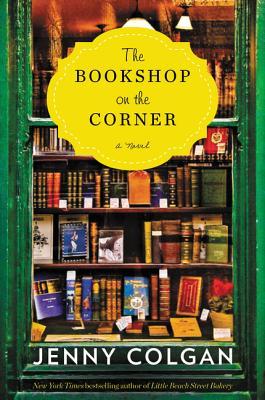
This book strikes fear into the hearts of book-loving librarians everywhere. In The Bookshop on the Corner, Jenny Colgan captures the literary heart and soul of the true bibliophile. Nina Redmond is a heroine who lives for books. Her flat is filled with tumbling stacks of books she rescued from garage sales, countless rounds of weeding in the library, and bookshops. What’s there to be afraid of when you live with your head in a book?
Trigger Warning: A library closes and is taken over by a media resource center in this book. There. I said it. If you can’t handle that brand of pain, please don’t touch this book. In the first chapter of the book, the question is posed: “What would you do if you weren’t a librarian? What are your dreams?”. What if librarianship was no longer part of your identity? It is the kind of question that can make a heart stop beating mid-sentence.
However, if you can take it, there is a literary light at the end of the tunnel. This is the story of how Nina finds a way to strike out on her own to keep her love of books alive and well. By bringing books to a small Scottish town in the middle of nowhere, she maintains her book-loving sanity and discovers a new love for life. In many ways.
Read this book to uncover the state of libraries everywhere. This is set in England and Scotland, but the tides are shifting for libraries everywhere. Find out how libraries can maintain a bookish wonder while adapting to a computer and media-centered world.
I may be a technology librarian personally, but might I just say: long live books! My house is filled with stacks of books. It’s where I go when I don’t want to touch technology. It’s where I go to explore new worlds and see life from different perspectives.
Technology is awesome, but books are my first love. So please, go hug your favorite book. Flip through the well-worn pages and inhale the decadent fragrance known only to book-lovers. Then pick up a new book.
Friday Reads: It’s All Relative: Adventures Up and Down the World’s Family Tree By A.J. Jacobs

When I’m out of something to read, or just in a rut, memoirs are my go to genre. Something about peeking into the lives of others, and realizing even the biggest star has gone through many of the same things I do, gives me the feeling of being transported to another time and place like no other.
A.J. Jacobs is writer of a number of memoirs, a few of which I’ve also read, mostly centered on a big idea. In his book “The Know-It-All” he tackles every entry in the Encyclopedia Britannica. In “The Year of Living Biblically” he does… well… just that by trying to follow the rules of the bible, and not just the big ones, as literally as possible. A.J. writes not only about his personal experience in each book but also how it affects his family, as well as the research and study surrounding each subject.
For this edition of “Friday Reads” I read “It’s All Relative: Adventures Up and Down the World’s Family Tree”. It starts off with a seemingly innocuous email from the husband of A.J.s eighth cousin. This man’s work on his own family tree has become his life’s passion with over 80,000 relatives on it, including A.J. This sparks something in A.J. who, after some quick poking around on his own, decides that he’s going to throw the world’s largest family reunion.
This book isn’t only just about genealogy but touches on a myriad of subjects like the meaning of family, DNA, privacy, history, race, celebrity, and death. Broken down into a weekly countdown to the reunion the chapters are in bite size chunks which makes for a quick and enjoyable read. There’s also a guide in the back of the book where A.J. goes over how to start researching your own family tree.
Personally I’ve never been into researching my families past, the making of a boring list of names, but this quote from the book tugged at my heart strings enough that I may have to give it a shot…
“What affects me emotionally isn’t seeing the ground where my ancestors’ bones lie. It’s hearing their tales, seeing their images, reading their words. It’s learning about the nickels they strewed on the ground for loved ones… that’s what gets me.”
Friday Reads: Say Nothing: A True Story of Murder and Memory in Northern Ireland, by Patrick Radden Keefe
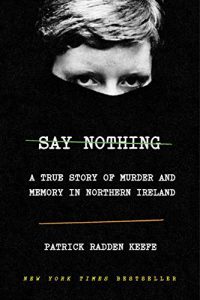
Growing up in the ’70s and ’80s, I was aware of sectarian violence in Northern Ireland—I heard news reports of IRA bombings and hunger strikes—but I definitely didn’t have a clear understanding of the issues. Therefore, when Patrick Keefe published Say Nothing: A True Story of Murder and Memory in Northern Ireland to rave reviews earlier this year, I figured it would be an educational and engaging read. I wasn’t disappointed.
As its subtitle suggests, Say Nothing follows some conventions of the true crime genre. The book begins with the 1972 abduction of Jean McConville, a mother of 10, from her apartment in a public housing complex in West Belfast. Twenty-some chapters later, in 2003, her remains are uncovered on a beach in the Republic of Ireland, just south of the border with Northern Ireland. A pathologist’s report suggests she died from a single gunshot to the back of the head.
The “whodunit” thread definitely runs throughout the narrative, sometimes surfacing as a major plot point, but just as often fading into the background. My sense is that Keefe’s primary interest is in using McConville’s disappearance as a springboard for his broader exploration of the period known as the Troubles—three decades of violence centered in Northern Ireland, beginning in the late 1960s and running through approximately 1998.
My takeaways from reading the book include a more granular understanding of the differences between the Official IRA, the Provisional IRA, and Siin Féin; greater awareness of the various roles played by Gerry Adams during the Troubles, as well as insight into why he is such a controversial figure; and the sobering realization that Bobby Sands was actually one of ten hunger strikers who died at intervals over the summer of 1981.
Say Nothing is exactly the kind of nonfiction book I enjoy. It taught me something new without giving off a dry textbook vibe. It’s also given me a more nuanced understanding of how tensions from the past inform present day concerns—in this instance, related to Brexit. Chief among these concerns is what impact the United Kingdom’s exit from the European Union will have on the border between Northern Ireland and the Republic of Ireland.
Speculation also swirls that Brexit may tip the scale toward Irish unification—a longstanding republican dream. As Keefe writes, “[i]t would be ironic, to say the least, if one inadvertent long-term consequence of the Brexit referendum was a united Ireland—an outcome that three decades of appalling bloodshed and some thirty-five hundred lost lives had failed to achieve.”
Overall, this book is a powerful reminder of William Faulkner’s assertion that “[t]he past is never dead. It isn’t even past.”
Keefe, Patrick Radden. Say Nothing: A True Story of Murder and Memory in Northern Ireland. New York: Doubleday, 2019.
Friday Reads: The Line Between by Tosca Lee
Cults, the impending apocalypse, and an ancient plague.
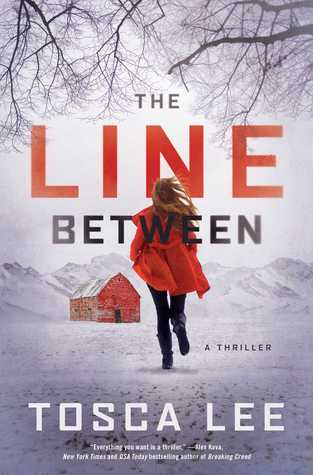
Wynter and her sister spent fifteen years within the walls of the New Earth doomsday cult compound under the charming leadership of Magnus, an ambassador to God himself. As Wynter’s sister, Jaclyn, seemed to thrive in this world, Wynter struggled.
After she’s cast out from her family and community, Wynter is forced into the outside world just in time for it to start ending. An ancient disease has been freed from the melting Alaskan permafrost and is sweeping across America causing victims to fall into madness (as well as general societal chaos and violence). Late one night, Jaclyn reappears with medical samples that might just hold the key. Now Wynter must find a way to get them to a research lab in Colorado before the world really does end as prophesied by Magnus.
The story alternates between past/present, through Wynter’s time living in the compound, to her banishment, as she connects with old family friends and tries to adjust to the outside world, then through the dangerous journey to save (and understand) the world with the help of former military, Chase Miller.
The sequel (A Single Light) comes out September 17th. (Don’t worry though, this first book doesn’t end with a big cliff-hanger.)
Don’t miss Tosca Lee tomorrow at the Book Festival!
Saturday, September 7th 1:00-2:30 p.m.
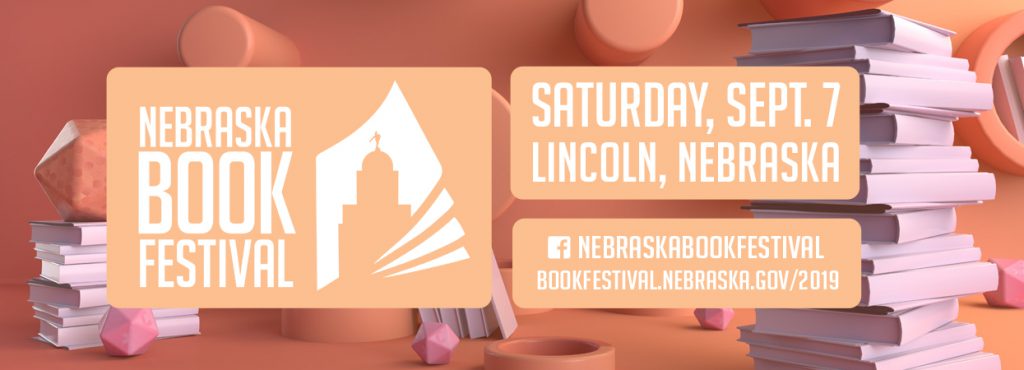
Friday Reads & BookFace Friday: Bivouac by Kwame Dawes
I’m reading Bivouac by Kwame Dawes, and I’m reminded that the 1980s were more than a station on your satellite radio. (And does your 80s station play Burning Spear as well as Musical Youth?) The novel is set in Jamaica, and politics are tumultuous throughout the region, and the activist father of our protagonist has died. It could be murder, but that murder might be medical malpractice, or it might have been as assassination.
Dawes uses a notable structural technique in telling the book from more than one viewpoint, and it feels modern as storytelling, extratextual—and the structural choices in form suggest to the reader that they consider the structural forms of the novel, and of family, and of political organization.
The formal structure only helps the reader become more intimate with the characters, and there is much to know. I’m thinking about the problem of guilt for a person who does not have good luck, but has still better luck than people close to them. I’m thinking about how a person can lose a progenitor but have that family live on as a symbol of something important to them—and how that can create tension between the love they feel for family, and the reality they have to continue to live in without that family present. You can’t resolve anything with someone who is gone, except by resolving with yourself. And everyone who is left behind has their own grief, and not all grief gets along.
Review by Lynda Clause, Nebraska Library Commission employee
Dawes, Kwame S. N. Bivouac: A Novel. , 2019. Print.
Meet the author at the upcoming Nebraska Book Festival September 7th in Lincoln.
Posted in Books & Reading
Tagged #FridayReads, Bivouac, bookface, bookfacefriday, Friday Reads, Kwame Dawes, Nebraska Author, Nebraska Book Festival
Leave a comment
Friday Reads: Heart Land by Kimberly Stuart
 I read Heart Land to highlight this author’s visit to our upcoming Nebraska Book Festival September 7th in Lincoln. I could have easily shared this book with my mom as it fits into the genre of authors she liked including Jan Karon and Rosamunde Pilcher. This book follows the Hallmark movie recipe of an urban woman interrupting her hectic life to return to her rural hometown. Upon her arrival, she discovers love and a new appreciation for a slower pace of life.
I read Heart Land to highlight this author’s visit to our upcoming Nebraska Book Festival September 7th in Lincoln. I could have easily shared this book with my mom as it fits into the genre of authors she liked including Jan Karon and Rosamunde Pilcher. This book follows the Hallmark movie recipe of an urban woman interrupting her hectic life to return to her rural hometown. Upon her arrival, she discovers love and a new appreciation for a slower pace of life.
Such is the case with Grace Kleren, who graduated top of her class from the Fashion Institute of Technology with dreams of being a successful clothing designer. Having lost both of her parents in a car crash as a teen, she suffered a crisis of faith. Grace is fired from her job after pitching her clothing line to the boss, and unable to pay the bills, she returns to her Iowa hometown to live with her Grandma Gigi. On her first day job hunting, she almost runs over her high school boyfriend Tucker. Happily, there are no injuries but finding a way to earn a living requires some ingenuity.
Working with Gigi, the Church Sewing Club, and some vintage fabric, Grace finds a new and lucrative way to exhibit her design creativity. A few postings on Etsy prove that others also appreciate her design aesthetic. Soon she receives national attention in an online fashion magazine and an invitation to New York. As Grace navigates the conflicts between her head and her heart, her journey is about finding her own truth and what matters most. All of this happens with the encouragement of those who have always loved her in rural Iowa, where life is less exciting, but a good place to sort out Plan B.
Stuart, Kimberly. Heart Land. Howard Books (2018)
Posted in Books & Reading
Tagged #FridayReads, Friday Reads, Heart Land, Kimberly Stuart, Nebraska Book Festival
Leave a comment
Friday Reads: “After the Flood” by Kassandra Montag
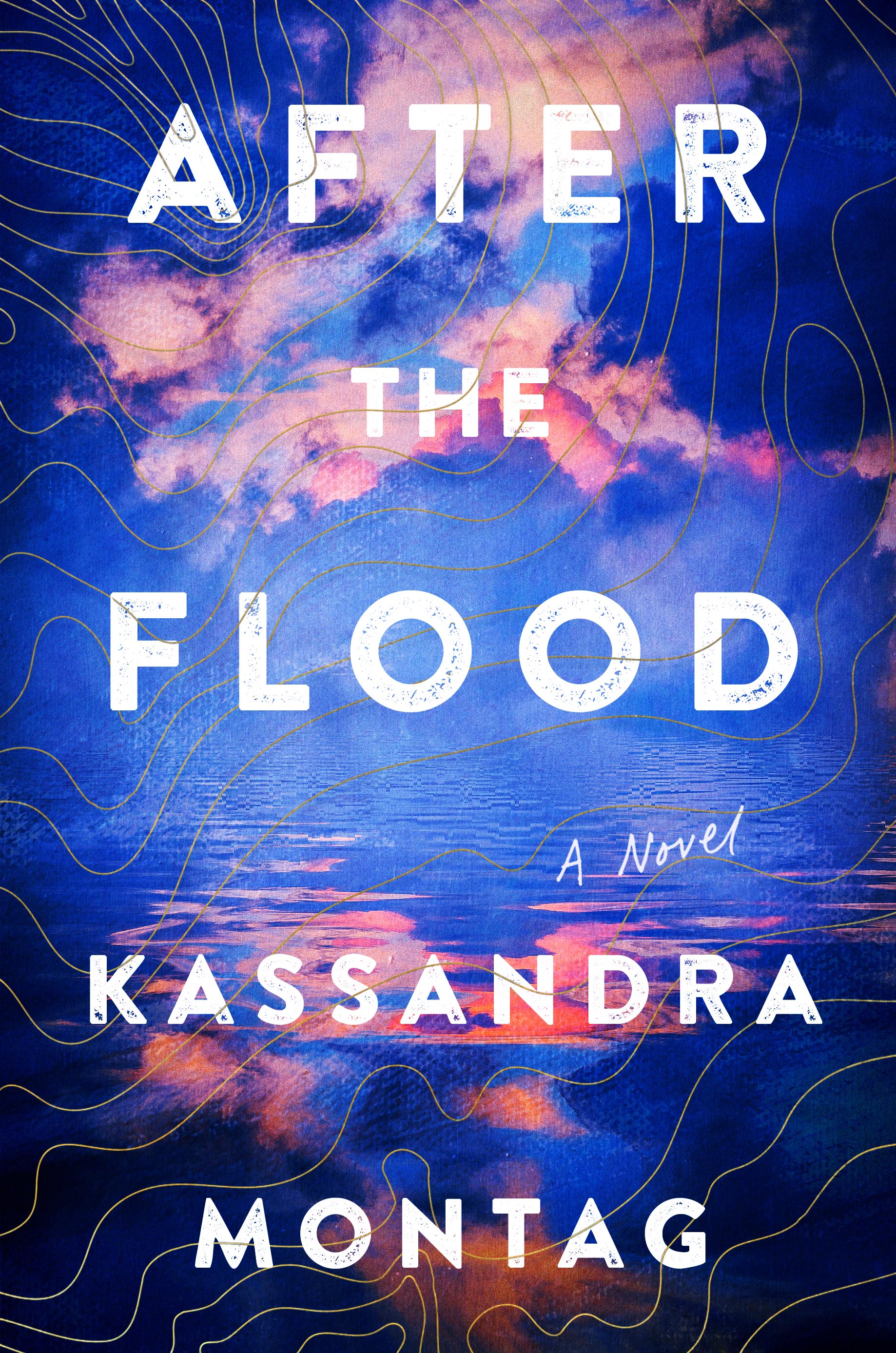 How far would you go to find your stolen child? What lies would you tell? What lines would you cross? I have been waiting at least a year to get my hands on this book, and when I finally did I couldn’t put it down. In her debut novel, Kassandra Montag has created a world that doesn’t seem as unlikely as you’d hope. Left in a Noah-esqu existence, characters are just trying to survive the destructive effects of climate change. Only the highest mountain tops dot the new landscape after massive flooding covers the earth. Myra, our heroine, and narrator is making her life on a small fishing boat after suffering devastating loss and betrayal. With only her six-year-old daughter by her side, Myra must make the choice of pursuing the trail of the daughter she lost or protecting the one she still has.
How far would you go to find your stolen child? What lies would you tell? What lines would you cross? I have been waiting at least a year to get my hands on this book, and when I finally did I couldn’t put it down. In her debut novel, Kassandra Montag has created a world that doesn’t seem as unlikely as you’d hope. Left in a Noah-esqu existence, characters are just trying to survive the destructive effects of climate change. Only the highest mountain tops dot the new landscape after massive flooding covers the earth. Myra, our heroine, and narrator is making her life on a small fishing boat after suffering devastating loss and betrayal. With only her six-year-old daughter by her side, Myra must make the choice of pursuing the trail of the daughter she lost or protecting the one she still has.
While the setting is a post-apocalyptic, the characters are completely authentic. No super-human strength, good looks, or smarts, just real people coping with their new reality. This book left me wanting more of everything, the story, the characters, and their relationships. I’m not so secretly hoping Montag has a sequel up her sleeve.
Come hear more about this great novel from the author herself on September, 7th at the Nebraska Book Festival. This Nebraska author will be answering questions and signing books, so don’t miss it!
Montag, Kassandra. After the Flood. William Morrow (2019)
Friday Reads: “This Blessed Earth” by Ted Genoways
 Ted Genoways spent a year following a Nebraska farm family – the Hammonds – and writes about his experiences and observations in his book, This Blessed Earth. Rick Hammond and his family raise soybeans, corn, and cattle on their fifth-generation farm near York. Genoways has said that the book intends a “kind of farm-level understanding of the systems that currently exist.” Genoways captures the challenges of farming and life experienced by this one farm family and, more generally, others.
Ted Genoways spent a year following a Nebraska farm family – the Hammonds – and writes about his experiences and observations in his book, This Blessed Earth. Rick Hammond and his family raise soybeans, corn, and cattle on their fifth-generation farm near York. Genoways has said that the book intends a “kind of farm-level understanding of the systems that currently exist.” Genoways captures the challenges of farming and life experienced by this one farm family and, more generally, others.
Genoways, a Nebraskan with long-standing family ties to farming, underscores the fact that farming is a huge gamble. In part, it is a matter of living with the uncertainty of weather, the unpredictability of global markets, federal farm policies, finances and more. These and many other challenges determine whether farming income exceeds expenses, falls below, or breaks even. A sudden storm, a downward turn in the markets, equipment breakdowns, and other unexpected events can change prospects dramatically.
Today’s farms are remarkably different from those of previous generations – farms covering thousands of acres, large and expensive tractors, and other equipment with computer screens, and GIS technology to determine spacing and measurement of soil moisture.
A bonus is the historical content and commentary that Genoways provides. Genoways writes about plant science, hybrid seeds, chemicals, water rights, irrigation, and much more. I grew up on a northeast Nebraska farm, decades ago. We raised soybeans among other crops. I had no idea that Henry Ford’s leadership, research, and initiatives were critical in the soybean becoming the dominant agricultural commodity that it is. Genoways details Ford’s recognition of the potential of the soybean for manufacturing and other byproducts. Genoways writes in-depth about Nebraska’s water resources, needs, vulnerability, policies, and management.
Beyond their hard work and self-reliance, farmers must have multiple skills – the ability to fix what is broken, the knowledge to grow and manage crops, the judgment to know when to plant and harvest, to raise and care for livestock, and the intellect to know when to buy and sell.
This Blessed Earth has received much-deserved recognition. It is the book selected by both Iowa and Nebraska for the two states’ 2019 statewide reading programs – All Iowa Reads and One Book One Nebraska. It is among the Smithsonian’s “Ten Best History Books of 2017” and it is the prizewinner of the Stubbendieck Great Plains Distinguished Book Award presented by the Center for Great Plains Studies.
Ted Genoways is a Nebraska book Award winner for both poetry (Bullroarer: A Sequence) and nonfiction (The Chain).
Genoways will speak at the Nebraska Book Festival on September 7.
Genoways, Ted. This Blessed Earth. W.W. Norton, 2017.
Friday Reads: “Zoo Nebraska” by Carson Vaughan
 A few Nebraska natives still remember the little ragtag children’s zoo in Royal, Nebraska before its tragic end, but its existence has faded into the background of local knowledge like an empty, weathered barn. Easily overlooked. Carson Vaughan invites readers to slow down and take a closer look at what happened—or what could have, should have happened—in Zoo Nebraska: The Dismantling of an American Dream.
A few Nebraska natives still remember the little ragtag children’s zoo in Royal, Nebraska before its tragic end, but its existence has faded into the background of local knowledge like an empty, weathered barn. Easily overlooked. Carson Vaughan invites readers to slow down and take a closer look at what happened—or what could have, should have happened—in Zoo Nebraska: The Dismantling of an American Dream.
The murder of a mentor, a chimp named Reuben, a generous donation from Johnny Carson, and a white-knuckled hope to wring a scientific center out of an underfunded zoo drive founder and director Dick Haskin, but the dream alone can’t sustain him for long. Exhausted, Haskin turns directorship over to others, and we watch the actions of each new, well-meaning but misguided leader unravel into tragedy.
Vaughan calmly lays out the facts in vivid detail. Reading these pages I could feel the gravel crunch beneath my feet as he guided me through Royal, showing the empty buildings, the shadows of past residents. And I felt Vaughan’s shock as my own as he pointed, saying, “That’s where they shot Reuben.”
This week’s Friday Reads was guest written by Anna Weir, Publicist at the University of Nebraska Press! Vaughan will speak at the Nebraska Book Festival on September 7. Read Zoo Nebraska and bring your questions – I’m sure this candid narrator would be happy to answer.
Vaughan, Carson. Zoo Nebraska: The Dismantling of an American Dream. Little A (2019)
Friday Reads: Dog Man: Unleashed
 In keeping with the tradition of, er, I mean, my tradition of, lowbrow reading, this week’s installment is a little write up about Dog Man Unleashed. While the intended audience here is definitely grades 2+, uncultured readers of any age will enjoy the originality of this story. Dog Man Unleashed is the second installment in Dav Pilkey’s Dog Man series. The Dog Man series tells the post-accident stories of Dog Man (of course), a surgical union of a police officer and his sidekick police dog, Greg. An explosion resulted in injuries to both, so to save them, a surgeon sewed Greg’s dog head onto the human police officer’s body, resulting in (you guessed it), Dog Man.
In keeping with the tradition of, er, I mean, my tradition of, lowbrow reading, this week’s installment is a little write up about Dog Man Unleashed. While the intended audience here is definitely grades 2+, uncultured readers of any age will enjoy the originality of this story. Dog Man Unleashed is the second installment in Dav Pilkey’s Dog Man series. The Dog Man series tells the post-accident stories of Dog Man (of course), a surgical union of a police officer and his sidekick police dog, Greg. An explosion resulted in injuries to both, so to save them, a surgeon sewed Greg’s dog head onto the human police officer’s body, resulting in (you guessed it), Dog Man.
The writing appeals to younger reluctant readers and often isn’t grammatically correct (e.g. Super is “Supra”, and Laughs are “Laffs”), but who cares? You aren’t reading this for the highbrow storyline, you read it for the cartoonish illustrations and over the top tangents. And let’s face it, some educators need to lighten up a little bit and not worry about all these details. The antagonist Petey the cat (not to be confused with Pete the Cat), is the recurring up to no good villain who also appears in a couple of the Captain Underpants books, and has multiple schemes throughout the Dog Man Series. This installment (Dog Man Unleashed), while simplistic (Dog Man working to save the city from the evil, up to no good Petey), is effective in that it ultimately demonstrates kindness, empathy, friendship, teamwork, etc. However, the side stories, such as Dog Man tracking things with his smell, chasing cars, and hiding bones are equally entertaining. That and the simplistic illustrations will surely give the reader some welcome laffs.
One final note on those that express displeasure with the grammatical incorrectness of this book. Let me say that we often are caught up in rigidity at the expense of art and creativity. And (yep, I’m starting a sentence with And), that is evidence of one’s missing out on truly imaginative and unique things.
Pilkey, Dav. Dog Man Unleashed. Graphix (2016).
Friday Reads: “Pretend I’m Dead” and “Vacuum in the Dark” by Jen Beagin
 I read a review for Vacuum in the Dark and discovered that it was the sequel to Jen Beagin’s 2015 debut novel, Pretend I’m Dead. The latter tells the story of Mona, a 24-year-old cleaning woman in Lowell, Massachusetts, who just can’t seem to find her place in the world. Mona volunteers at a clean-needle exchange, collects vintage vacuum cleaners, and has an inner-dialogue with NPR’s Terry Gross (“This is Fresh Air!”). After a doomed relationship with a junkie, she moves to Taos, New Mexico.
I read a review for Vacuum in the Dark and discovered that it was the sequel to Jen Beagin’s 2015 debut novel, Pretend I’m Dead. The latter tells the story of Mona, a 24-year-old cleaning woman in Lowell, Massachusetts, who just can’t seem to find her place in the world. Mona volunteers at a clean-needle exchange, collects vintage vacuum cleaners, and has an inner-dialogue with NPR’s Terry Gross (“This is Fresh Air!”). After a doomed relationship with a junkie, she moves to Taos, New Mexico.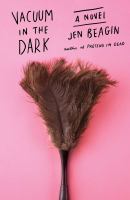
The rest of the novel, and the next book, follow Mona as she builds her house cleaning business in Taos (getting to know her clients in person and through their belongings; if you ever thought your cleaning person didn’t snoop, you’d be wrong). She makes poor decisions and weird friends, follows a man to Bakersfield, California, and confronts her past… and her future.
Each book can be read as a stand-alone, but I’d suggest reading them in order. Neither is terribly long – about 240 pages each. If you enjoy gallows humor, quirky characters, and discussions of cleaning products, Mona is the anti-heroine you’ve been waiting for.
Beagin, Jen. Pretend I’m Dead. Northwestern University Press, 2015.
Beagin, Jen. Vacuum in the Dark. Scribner, 2019.
Friday Reads: ‘Redshirts’ by John Scalzi
 I’m going to start off my review of Redshirts with a bold statement. If you are a fan of Star Trek – you need to read this book! And if you are a fan of Star Trek, the title should probably have been an obvious clue.
I’m going to start off my review of Redshirts with a bold statement. If you are a fan of Star Trek – you need to read this book! And if you are a fan of Star Trek, the title should probably have been an obvious clue.
For the uninitiated, ‘redshirt’ is the term that fans use to refer to the expendable crew members in the Star Trek universe. Whenever you see a landing party heading down to a planet, and a previously unknown character has been added to the team, you can almost guarantee that they are destined to die, in some horrific and/or ridiculous way. Typically these characters are security personnel, who wear red shirts as their uniform.
But, what if these particular crew members started noticing the trend, realizing that their friends and colleagues keep dying on away missions, more often than should be statistically possible. What would they do about it? Can they do anything about it? You’ll definitely be surprised by what they discover and how they try to save their own lives.
John Scalzi is a brilliant writer, and I think Redshirts is one of his best. It’s creative, funny, heart-wrenching, and thought provoking. I admit it, I literally laughed out loud many times while reading this book. If you like Star Trek, sci-fi parody, and yes, even time travel, I think you’ll really enjoy Redshirts.
And if you like audiobooks, this one is read by none other than Wil Wheaton. Yes, Wesley Crusher from Star Trek: The Next Generation. Perfect casting!


